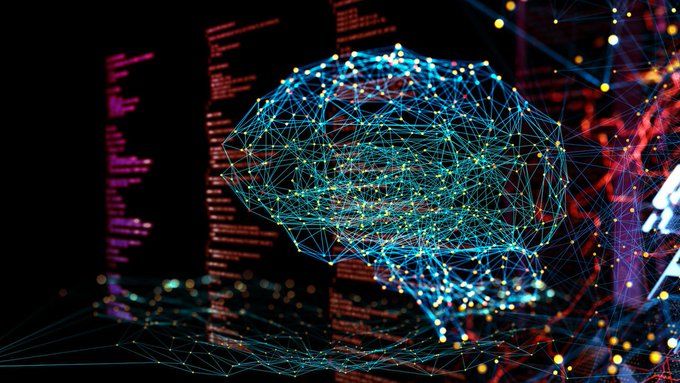Artificial Intelligence (AI) has rapidly moved from futuristic speculation to a core component of global business operations. Organizations in various industries are leveraging AI to elevate productivity, streamline processes, and discover data-driven insights. Around the world, AI tools have accelerated developments across diverse sectors—ranging from healthcare and manufacturing to finance and marketing. These transformations reflect not only technological progress but also a deep-rooted shift in corporate strategies and how businesses engage with consumers.
As more enterprises embrace AI-based solutions, the impact can be observed in rising automation capabilities, more accurate forecasting, and the creation of innovative services or products that meet consumers’ changing demands. Because AI systems excel at processing large volumes of data with speed and precision, companies that adopt these technologies gain a competitive edge in their respective markets. This article will explore the fundamentals of AI in contemporary commerce, highlight the effects of AI on consumer interaction, and examine how these transformations drive sweeping changes across the international marketplace.
Yet, as AI technologies surge forward, it is critical to recognize the importance of ethical considerations, data privacy, and fair implementation. Without deliberate oversight, AI’s expansion could amplify existing inequities or even introduce new forms of digital disparity. Consequently, businesses and policymakers must coordinate efforts to address potential risks, manage regulatory frameworks, and ensure AI supports sustainable progress. This extended discussion aims to illustrate the vast potential of AI to reshape industries while emphasizing the need for caution, responsibility, and inclusivity in this technological revolution.
AI is frequently portrayed as an all-encompassing concept. However, the field includes multiple subdomains and specialized techniques. Whether dealing with predictive analytics, computer vision, or natural language processing (NLP), each branch of AI addresses particular use cases that can profoundly influence business strategies.
1. Defining Artificial Intelligence
AI describes the effort to develop machines or software capable of tasks traditionally requiring human intellect. These tasks often include problem-solving, pattern recognition, decision-making, and self-learning. Although the ultimate objective of AI can differ—from replicating complex human cognitive processes to accelerating mundane tasks—the key uniting factor is its ability to learn from and respond to data-driven insights.
- A. Machine Learning (ML): A subset of AI dealing with algorithms that identify patterns, predict outcomes, and refine their performance over time.
- B. Deep Learning (DL): A specialized segment of ML that uses artificial neural networks structured similarly to the human brain, allowing for advanced tasks like image recognition.
- C. Natural Language Processing (NLP): Concentrates on the interaction between computers and human language, enabling tasks such as sentiment analysis, chatbots, and language translation.
2. Key Enablers of Modern AI
While the concepts behind AI date back decades, recent advancements hinge on several enabling factors that have spurred AI’s rapid acceptance:
- A. Accelerated Processing Power: Modern computing hardware, including GPUs and specialized AI processors, allows deep learning models to handle vast datasets in minimal time.
- B. Big Data Repositories: The growing volume of digital data—from social media analytics to Internet of Things (IoT) sensors—provides rich training material for AI algorithms.
- C. Widespread Cloud Adoption: Cloud computing services enable organizations to store, process, and scale AI applications without heavy upfront infrastructure costs.
3. AI’s Broader Economic Impact
AI is not merely an IT department concern; it underpins a broader shift in corporate culture and national economies. Many governments actively invest in AI research, while businesses integrate AI solutions to optimize supply chains, customer support, and more. This expanding influence of AI is a core driver for its growing acceptance in global business ecosystems.
AI’s Influence on Workforce and Skillsets
One of the most pressing issues surrounding AI is its immediate and long-term consequences for the labor market. While AI and automation can eliminate certain routine tasks, they also create demand for novel skillsets. The transformation of the workforce is multifaceted and affects every layer of an organization—from entry-level workers to top executives.
1. Automation vs. Augmentation
The automation of repetitive tasks—like data entry, invoice processing, and basic customer service—has prompted concerns about job displacement. Nevertheless, many experts emphasize that AI often serves more as an augmentation tool rather than a complete replacement for human workers.
- A. Reallocation of Human Roles: Employees can be redirected to roles requiring human insight, innovation, and leadership.
- B. Higher-Level Problem-Solving: By assuming routine duties, AI frees human staff to focus on strategy, creative projects, and relationship-building with clients.
- C. Collaborative Intelligence: Human judgment, combined with AI-based analytics, yields more effective outcomes than either working alone.
2. Upskilling and Reskilling Imperatives
In response to an AI-driven environment, companies and governments are launching training programs to equip the workforce with critical skills.
- A. Technical Fluency: Familiarity with data analytics, machine learning principles, and programming enhances employees’ ability to collaborate with AI systems.
- B. Soft Skills Enhancement: Creative thinking, adaptability, and emotional intelligence increasingly become differentiators as AI automates routine processes.
- C. Lifelong Learning Mindset: Continuous professional development ensures workers stay current in a rapidly shifting job market.
3. Leadership Evolution
Top-level executives and middle managers also adapt to AI’s pervasive influence. Decision-making processes now rely heavily on data analytics and real-time dashboards, encouraging leaders to become proficient at interpreting complex data.
- A. Data-Driven Strategies: Executives factor AI insights into everything from resource allocation to new market expansions.
- B. Fostering an AI Culture: Encouraging experimentation, agility, and interdepartmental collaborations can help an organization stay at the forefront of AI innovations.
- C. Ethical Responsibility: Company leadership must prioritize ethical AI use, ensuring fairness, transparency, and data security throughout the organization.
Applications of AI Across Key Industries
AI has confirmed its value in numerous fields, each experiencing unique benefits and facing specific hurdles. Below are some of the most prominent industries redefined by AI-driven practices:
1. Healthcare and Medicine
AI-supported innovations hold the promise of more accurate diagnoses, personalized treatments, and improved patient care.
- A. Medical Imaging: Deep learning algorithms detect anomalies in X-rays or MRIs, improving diagnostic speed and accuracy.
- B. Predictive Patient Care: Hospitals utilize machine learning tools to predict readmission risks, optimize staff schedules, and streamline patient workflows.
- C. Telemedicine Growth: NLP-based chatbots triage patient concerns remotely, while video-based telehealth ensures broader care access.
2. Manufacturing and Supply Chain
In production lines and logistical networks, AI assists in cost reduction, quality control, and robust supply chain resiliency.
- A. Predictive Maintenance: Sensors feed machine learning systems, warning technicians before equipment failures occur.
- B. Quality Inspection: Vision-based AI solutions identify product defects in real time, thus reducing wastage.
- C. Demand Forecasting: Analyzing both historical and current data, AI projections help maintain appropriate stock levels and inventory turnover.
3. Finance and Banking
The financial sector has been a front-runner in adopting AI for risk management, fraud detection, and customer engagement.
- A. Automated Underwriting: Loan approvals often rely on AI algorithms to measure a borrower’s creditworthiness swiftly.
- B. Fraud Prevention: Sophisticated ML models analyze transaction patterns, flagging suspicious behavior for further investigation.
- C. Robo-Advisors: AI-driven wealth management tools provide investment advice, portfolio analysis, and risk evaluations.
4. Retail and E-commerce
Online retailers harness AI to craft tailored user experiences and refine operational logistics.
- A. Personalized Recommendations: Machine learning algorithms analyze browsing history, purchase patterns, and search behavior to propose relevant products.
- B. Dynamic Pricing: Automated systems tweak product pricing based on demand, competition, and customer profiles, maximizing profits.
- C. Inventory Management: AI-driven demand forecasting helps businesses stock items more efficiently, minimizing backorders and markdowns.
5. Marketing and Advertising
AI in marketing is transforming how brands connect with customers through data-backed strategies.
- A. Targeted Campaigns: Predictive analytics identify ideal consumer segments, streamlining ad spend and boosting engagement.
- B. Conversational Chatbots: NLP-based solutions handle routine inquiries, freeing staff for intricate client interactions.
- C. Sentiment Analysis: Marketers use AI to interpret social media comments, brand mentions, and customer reviews to gauge public opinion.
The AI-Driven Customer Experience
A central outcome of AI adoption is an evolution in how businesses and consumers interact. AI-powered platforms capture, analyze, and utilize data at each step of the customer journey, leading to enhanced personalization and engagement.
1. Hyper-Personalization
In AI-rich environments, personalization extends beyond merely using a client’s name in marketing emails. Systems can glean individual preferences from browsing behaviors, purchase histories, and social media interactions.
- A. Tailored Product Recommendations: Through ML models, businesses can predict a consumer’s next likely purchase, boosting conversion rates.
- B. Customized Communications: Automated email campaigns adjust messaging, timing, and offers depending on the recipient’s profile.
- C. Adaptive Web Design: AI can rearrange a website’s layout based on user interactions, ensuring the most relevant products or content appear prominently.
2. Seamless Customer Support
Customer service, traditionally reliant on human representatives, is being upgraded by AI-driven chatbots, voice assistants, and automated help desks.
- A. Instant Resolutions: Chatbots address standard questions at any hour, reducing response times and manual support costs.
- B. Multilingual Support: AI-based language processing bridges communication gaps, enabling global consumer engagement without language barriers.
- C. Escalation Protocols: When complex issues emerge, AI systems route them to human agents equipped with comprehensive client data, expediting a successful resolution.
3. Predictive Insights for Consumer Satisfaction
Businesses no longer wait for feedback surveys or complaint calls. They use AI-based analytics to foresee potential customer issues and respond proactively.
- A. Churn Forecasting: By analyzing usage patterns and historical data, AI detects customers at risk of discontinuing services, prompting timely engagement.
- B. Behavior Tracking: Data on how users explore websites, mobile apps, or products reveals potential points of friction that can be optimized.
- C. Reward and Loyalty Programs: AI helps identify the most effective incentives, personalizing loyalty offerings to enhance brand affinity.

Global Expansion and Market Access
AI’s role in streamlining operations allows companies, including small and medium-sized enterprises, to scale more effortlessly across national borders. Automated data insights, sophisticated translation tools, and refined logistics planning enable efficient market penetration in previously challenging territories.
1. Language Localization
For international growth, AI-based NLP frameworks facilitate high-quality translations and localized content at scale.
- A. Automated Content Translation: Advanced translation engines transform product descriptions, marketing materials, and customer reviews in real time.
- B. Linguistic Nuances: NLP models capture cultural contexts, idioms, and style preferences—enhancing authenticity in local markets.
- C. Voice Assistants: AI voice technology extends brand reach in regions where voice search usage surpasses typed queries.
2. Market Insights and Cultural Adaptation
Before entering foreign markets, businesses rely on AI to interpret market data, consumer preferences, and cultural variables.
- A. Social Listening Tools: AI-driven analytics track regional social media trends, ensuring brands remain culturally relevant.
- B. Competitor Benchmarking: Automated competitor monitoring identifies gaps in the market, allowing strategic product positioning.
- C. Demand Projection: By evaluating local economic indicators, AI helps businesses forecast potential demand and align product lines accordingly.
3. Global Supply Chain Synchronization
Timely and effective product delivery remains central to cross-border expansion. AI helps coordinate freight routing, shipping logistics, and real-time inventory checks across multiple geographies.
- A. Route Optimization: Machine learning algorithms reduce transit times by continuously updating routes based on weather, traffic, and customs procedures.
- B. Inventory Redistribution: If one region experiences a shortage, AI-enabled dashboards quickly shift supplies from lower-demand areas, minimizing downtime.
- C. Risk Assessment: Political, environmental, and economic factors are analyzed to spot potential disruptions, encouraging proactive management strategies.
Ethical, Regulatory, and Security Considerations
AI’s boundless potential also unveils a range of ethical dilemmas. From biased algorithms to data privacy challenges, companies need to navigate these concerns if they intend to maintain trust and credibility in the market.
1. Algorithmic Fairness and Bias
When AI systems draw on biased datasets, they risk perpetuating and intensifying existing inequalities.
- A. Diverse Training Data: Ensuring datasets represent diverse populations helps reduce skewed predictions and discriminatory outcomes.
- B. Regular Audits: Independent bodies or internal teams evaluate AI outputs to identify potential biases, prompting corrective measures.
- C. Transparency Protocols: Some organizations reveal how AI-driven decisions are made, enhancing accountability to consumers and stakeholders.
2. Data Privacy
AI flourishes on data, making privacy frameworks crucial. Regions like the European Union enforce regulations such as the General Data Protection Regulation (GDPR) to uphold citizens’ rights.
- A. Informed Consent: Businesses must obtain explicit permission from users before gathering or analyzing personal data.
- B. Data Minimization: Collecting only the data necessary for core operations reduces both exposure and compliance risks.
- C. Secure Storage and Sharing: Encryption, secure access controls, and continuous monitoring defend against data breaches.
3. Cybersecurity Challenges
As AI becomes entwined with critical infrastructure and sensitive business processes, it becomes an attractive target for cybercriminals.
- A. Threat Detection Systems: AI-based security tools monitor network activity, flag anomalies, and repel potential intrusions in real time.
- B. Robust Authentication: Multi-factor identification and biometric solutions ensure that only authorized personnel can access AI platforms.
- C. Collaborative Defense: Industry-wide cooperation and intelligence sharing about attack patterns strengthen overall cybersecurity.
The Role of AI in Business Strategy and Decision-Making
Strategic planning in the AI era revolves around data-centric decision-making. Corporate leaders rely on analytics dashboards, real-time insights, and predictive modeling to craft strategies that adapt to market changes instantly.
1. Data-Driven Culture
Fostering a culture of data literacy is crucial for any company seeking to maximize AI’s potential.
- A. Data Democratization: Employees across departments should have access to analytics tools, encouraging collaborative problem-solving.
- B. Measurement of Key Performance Indicators (KPIs): AI monitors KPIs—like customer lifetime value or supply chain efficiency—in dynamic dashboards.
- C. Open Feedback Loops: Continuous data feedback enables rapid iteration, ensuring strategies remain aligned with consumer demands.
2. Scenario Planning and Forecasting
AI significantly refines forecasting mechanisms by factoring in real-world complexities—from environmental disruptions to shifting consumer behavior.
- A. Advanced Risk Models: Predictive analytics highlight risks and propose mitigation steps, aiding smoother strategic planning.
- B. Iterative Simulations: AI can run scenario-based models that test how different variables (e.g., pricing, regulation changes) might shape business outcomes.
- C. Adaptive Resource Allocation: Businesses allocate resources in real time, shifting investment between departments or products as data-driven insights dictate.
3. Competitive Differentiation
Organizations that effectively implement AI gain a distinct edge in crowded markets. AI-based product features, personalized user experiences, and efficient customer service can place a company ahead of slower-moving competitors.
- A. Customized Offerings: Real-time adjustments in product design or service parameters differentiate a brand from mass-market alternatives.
- B. Rapid Innovation Cycles: AI automates R&D tasks—like prototyping or testing—allowing teams to launch new solutions quickly.
- C. Data Partnerships: Collaborations with other entities generate shared insights, broadening the value proposition for all involved parties.
Barriers to AI Adoption and Possible Solutions
Despite its clear advantages, AI deployment does not come without complications. Companies often confront issues related to cost, organizational culture, and access to specialized expertise. Addressing these barriers systematically can smooth the adoption path.
1. High Initial Investment
Developing or procuring AI capabilities can be expensive, especially for small and medium-sized businesses.
- A. Cloud-Based Services: Pay-as-you-go solutions eliminate the need for large infrastructure outlays, making AI more affordable.
- B. Public-Private Initiatives: Government funding or tax incentives can defray adoption costs for critical industries.
- C. Phased Implementations: Starting with smaller AI projects allows organizations to demonstrate quick wins, then scale up gradually.
2. Skills Gap
A lack of in-house AI expertise remains a major obstacle for many companies.
- A. Strategic Recruitment: Hiring data scientists, ML engineers, and AI product managers forms the backbone of AI-driven teams.
- B. Partnerships with Academia: Collaborative research projects and internship programs expand a company’s talent pool.
- C. Internal Training: Providing coding workshops, data analytics sessions, or AI certifications fosters a culture of continuous learning.
3. Organizational Resistance
AI frequently overturns existing procedures, leading to misunderstandings or even fear about job security.
- A. Transparent Communication: Clearly explaining AI’s role in augmenting, not replacing, human workers builds acceptance.
- B. Inclusive Planning: Inviting employees to contribute insights and suggestions ensures AI solutions are user-friendly and benefit the entire organization.
- C. Change Management Strategy: Structured approaches, including ongoing feedback sessions, help employees adapt to new tech-based workflows.
Collaborative AI Ecosystems
The future of AI in business involves cross-sector synergy, where technology providers, governments, and enterprises collaborate for shared benefits. These ecosystems push forward research and accelerate breakthroughs in AI applications.
1. Public-Private Alliances
Many governments fund AI initiatives in healthcare, defense, and sustainable development, generating co-research projects with leading corporations.
- A. Infrastructure Sharing: Governments and private companies share data storage, high-speed networks, and AI labs, enabling broader innovation.
- B. Incentive Programs: Reduced taxes or grants encourage businesses to test solutions in public services or infrastructure projects.
- C. Regulatory Sandboxes: Flexible policy zones allow AI developers to experiment under controlled conditions, prompting responsible innovation.
2. Industry-Specific AI Consortia
Collaborations within the same sector unite companies that share challenges—like fraud detection in finance or safety protocols in manufacturing.
- A. Data Exchange Platforms: Standardized, anonymized databases help train AI models more efficiently without compromising privacy.
- B. Joint Technology Standards: Collectively developing open standards ensures AI solutions remain interoperable across different systems.
- C. Advocacy for Common Good: Such consortia can jointly lobby for favorable regulations, promoting beneficial AI use cases.
3. Startups and Incubators
Entrepreneurs and small businesses play an essential role in spurring AI-driven innovation. Incubators, accelerators, and venture capitalists form a robust support network.
- A. Funding and Mentorship: Startups gain access to investment capital, domain expertise, and potential partnership opportunities.
- B. Quick Pilot Projects: Large firms sometimes partner with startups to run pilot AI implementations, minimizing overhead and risk.
- C. Niche Innovations: Startups often tackle specialized challenges—such as AI for environmental conservation—that major corporations may overlook.
Long-Term Outlook: AI and Future Business Paradigms
AI is an evolving force with no signs of slowing down. As breakthroughs in areas like quantum computing, brain-inspired neural networks, and advanced robotics continue, the scope of AI’s potential in business will only grow. Looking beyond current trends, we see an era where nearly every organizational function leverages real-time intelligence.
1. Quantum-Enhanced AI
Quantum computing, still in its infancy, promises exponentially higher processing speeds compared to current computers. For AI, this could mean faster model training, more accurate simulations, and solutions to complex optimization problems that defy classical computing.
- A. Financial Modeling: Complex portfolio optimizations might be solved in seconds, unveiling investment strategies with minimal risk.
- B. Pharmaceutical R&D: Simulations of molecular interactions become more precise, unlocking potential medical breakthroughs faster.
- C. Logistics and Route Planning: More sophisticated route optimization could drastically reduce shipping times and operational costs.
2. Brain-Inspired and Neuromorphic Computing
Researchers are developing chips that mimic biological neuron behavior. This design could yield more efficient AI systems capable of processing data with less energy consumption.
- A. Real-Time Analytics: Neuromorphic devices can handle continuous data streams, supporting tasks like live video analysis for traffic control.
- B. Energy Efficiency: Lower power demands reduce operational costs, encouraging AI adoption in embedded systems and remote installations.
- C. Autonomous Systems: Drones, robots, and autonomous vehicles stand to benefit from on-device, lightning-fast processing.
3. Greater Personalization and Hyper-Automation
As AI grows more sophisticated, businesses will attempt to personalize every aspect of the consumer experience. Meanwhile, hyper-automation—where multiple AI systems handle end-to-end tasks—will define the next era of digital transformation.
- A. Intelligent Assistants: Voice-activated AI could orchestrate daily tasks, from scheduling appointments to restocking household supplies.
- B. Fully Automated Supply Chains: Autonomous trucks, robotic warehouses, and AI-driven procurement systems minimize human intervention.
- C. AI-Generated Content: Marketing materials, articles, and even custom product designs could be generated on-demand, reflecting individual consumer tastes.
Building Responsible and Inclusive AI Frameworks
Even as AI unveils extraordinary possibilities, building trust is paramount. AI must be developed and used in ways that respect human rights, safeguard data, and promote a fair and equitable society.
1. Ethical AI Guidelines
Several organizations have crafted ethical standards that outline transparency, accountability, and fairness in algorithmic systems.
- A. Privacy-by-Design: Data protection measures are integrated from the start, ensuring minimal invasion of user privacy.
- B. Human-in-the-Loop Mechanisms: Critical AI decisions—like medical diagnoses or legal judgments—may still necessitate final human confirmation.
- C. Ongoing Governance: An ethics board or oversight committee monitors AI deployments, advising on best practices and flagging potential misuses.
2. Bridging the Digital Divide
AI should not exacerbate existing social or economic inequalities. Instead, it can be harnessed to expand opportunities for underrepresented communities.
- A. Equitable Access: Affordable data plans, public internet hotspots, and educational programs close the gap for marginalized groups.
- B. Culturally Relevant Tools: AI applications must adapt to local languages and cultural contexts, ensuring they cater to diverse populations.
- C. Community Engagement: Nonprofits, local governments, and tech companies can collaborate to distribute AI benefits where they are most needed.
3. Regulatory Harmonization
Countries worldwide are experimenting with laws, guidelines, or policy frameworks around AI. Harmonizing these regulations is an ongoing effort, balancing innovation with control.
- A. Global Dialogues: International bodies, such as the United Nations or World Economic Forum, host summits to facilitate cooperation on AI governance.
- B. Enforcement Mechanisms: Compliance checks and penalties ensure that large tech corporations respect individual rights.
- C. Dynamic Legislation: Given AI’s rapid pace, regulations should be flexible, allowing for adjustments as new advancements arise.

Practical Steps Toward AI Integration
For businesses determined to remain competitive in the AI-driven future, the path to integration involves strategic planning, community-building, and ethical consciousness.
1. Comprehensive AI Strategy
Before applying AI, companies should clearly define project goals, success metrics, and stakeholder responsibilities.
- A. SWOT Analysis: Evaluate strengths, weaknesses, opportunities, and threats to tailor AI initiatives to organizational realities.
- B. Task Prioritization: Identify which processes—customer service, logistics, sales—will benefit the most from immediate AI deployment.
- C. Scalability Plans: Outline how AI projects will evolve, potentially integrating with other emerging technologies like 5G or IoT.
2. Small-Scale Pilots
Pilot projects allow teams to test AI solutions in controlled, low-risk environments. A smaller rollout can reveal potential issues early on, guiding improvements before broader adoption.
- A. Measurable KPIs: Define clear metrics—processing time, error rates, conversion rates—so pilot performance is easy to evaluate.
- B. Feedback Loops: Encourage user feedback—both employees and customers—through simple digital surveys or focus groups.
- C. Gradual Scaling: Successful pilots can grow incrementally in scope, championing confidence among stakeholders.
3. Partnering with AI Specialists
Many organizations find that collaborating with external AI experts is more efficient than solely relying on in-house resources.
- A. Consulting Firms: AI-focused consulting agencies offer specialized roadmaps, staff training, and sector-specific best practices.
- B. Academic Partnerships: Research labs bring cutting-edge insights, forging mutual benefits for both students and companies.
- C. Developer Communities: Open-source ecosystems offer peer support and specialized libraries, expediting AI solution development.
4. Continuous Monitoring and Optimization
Post-deployment, AI tools require ongoing calibration. Models may become outdated if market conditions or consumer behaviors shift drastically.
- A. Performance Tracking: Regularly evaluate AI outputs, verifying accuracy and identifying bias or drift in the model’s performance.
- B. Real-Time Dashboards: Interactive visualization tools provide real-time data about AI processes, fostering informed decision-making.
- C. Version Control: When improvements are made, older versions of AI models should be carefully archived for potential compliance or troubleshooting needs.
Conclusion
The integration of AI into global business landscapes marks one of the most consequential technological transformations in history. From healthcare breakthroughs to automated manufacturing lines, from personalized marketing experiences to advanced fraud detection, AI has injected new vitality into many aspects of commerce. As more enterprises embark on AI-driven initiatives, they wield the power to reshape consumer expectations, redefine productivity, and enrich product offerings.
Still, this revolution is not devoid of pitfalls. Ethical considerations, regulatory compliance, and equitable access should remain at the forefront of AI adoption strategies. The businesses that thrive will be those that blend innovation with accountability—championing transparent data usage, mitigating biases, and serving stakeholders of every background. Policymakers, tech developers, and thought leaders must collaborate to craft guidelines that keep AI’s growth equitable, secure, and sustainable.
Looking ahead, AI’s trajectory will be guided by radical new technologies such as quantum computing, neuromorphic chips, and hyper-automation. These progressions promise even greater speed, efficiency, and adaptability. Indeed, the companies ready to adopt proactive strategies, invest in cutting-edge research, and cultivate a learning culture will be positioned to lead—and not merely follow—this era of AI innovation.
By acknowledging both the transformative capacity of AI and the corresponding responsibilities, businesses worldwide can harness this technology for enduring success. The coming years will spotlight enterprises that merge high-level data insights, automation prowess, and ethical responsibility to craft experiences that surpass consumer expectations. The AI-driven future awaits, holding tremendous potential for those prepared to navigate its complexities and seize its abundant possibilities.












